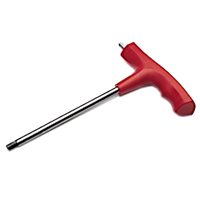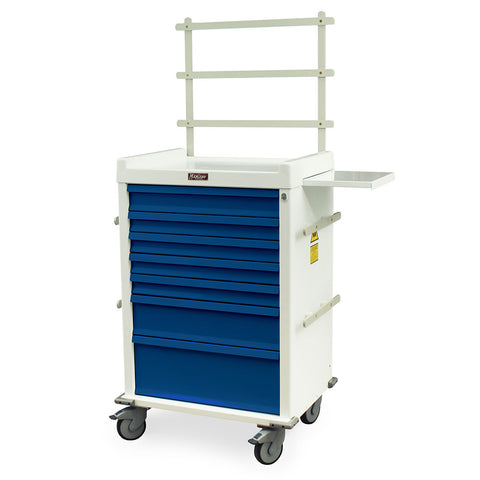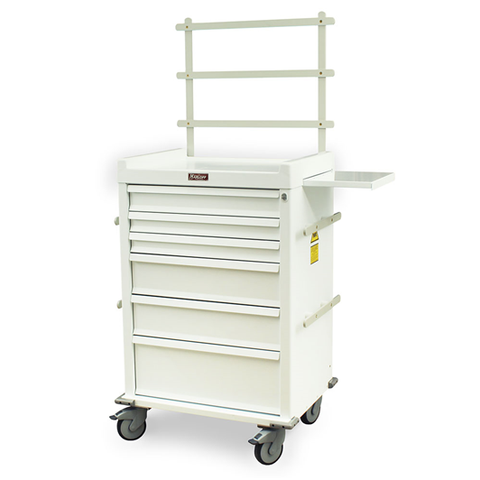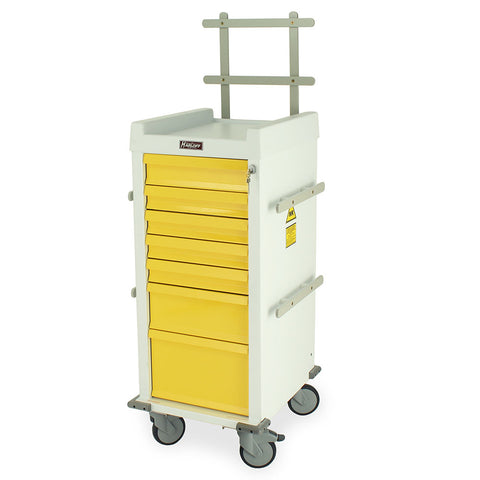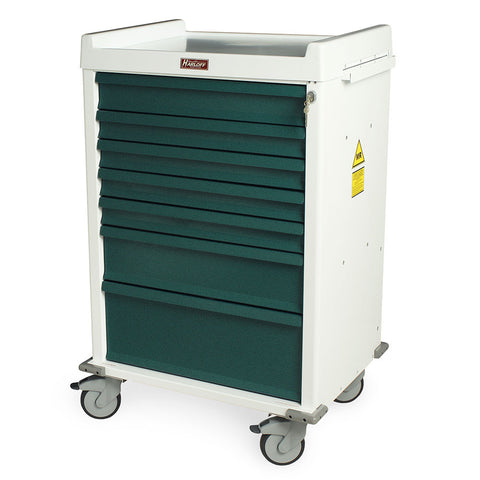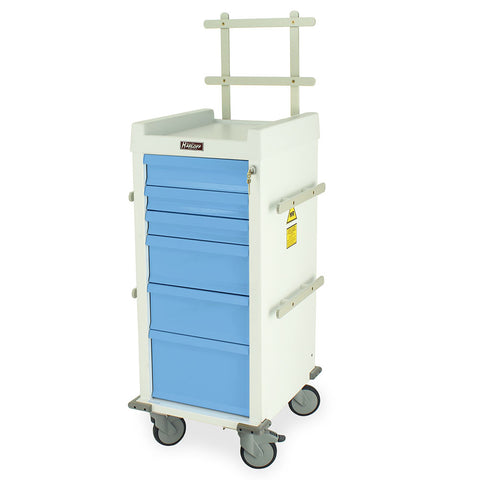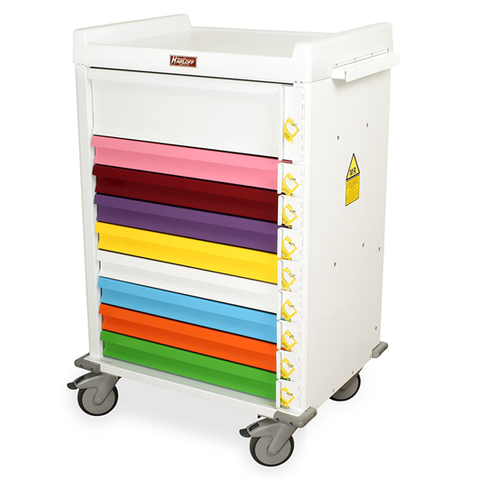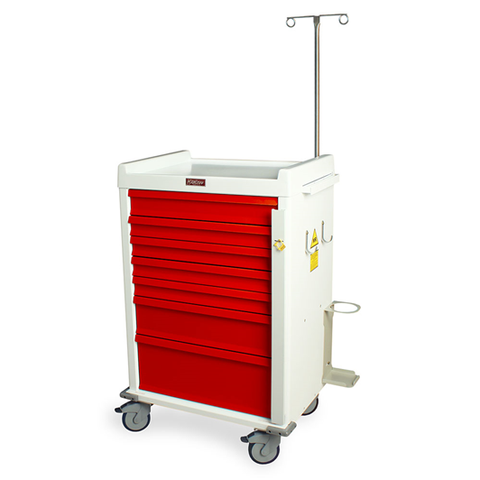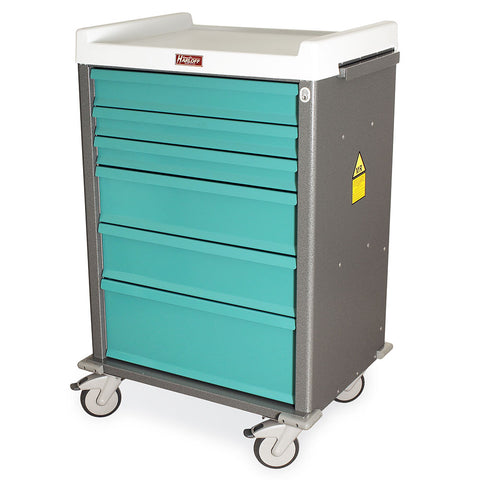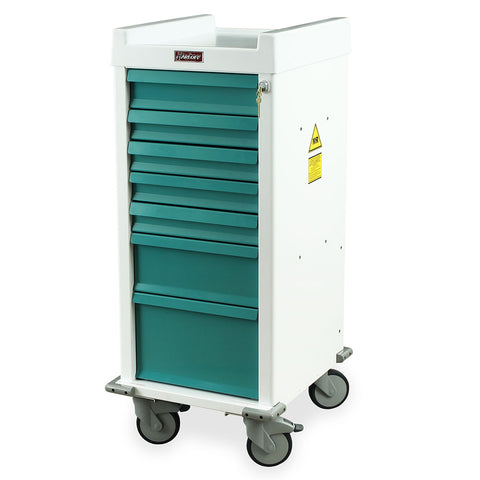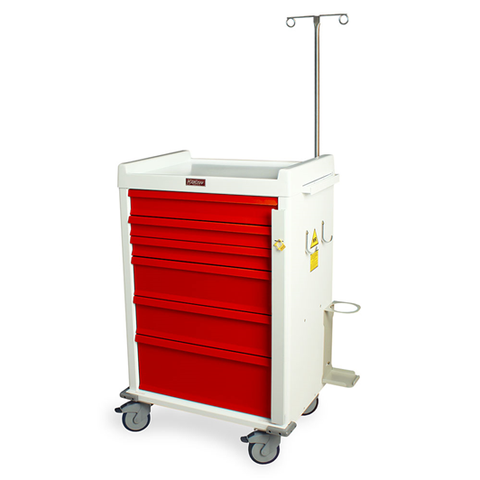
When it comes to MRI patient transport, choosing the right device can dramatically affect both patient safety and workflow efficiency. MRI suites present unique challenges, including strong static magnetic fields, radiofrequency energy, and time-varying gradients. Selecting the proper MR Conditional stretcher or wheelchair is critical to ensure safe and effective transport. This guide compares MRI wheelchairs and stretchers from MRIMed, helping facilities choose the right solution for every patient scenario.
Understanding the Differences Between MRI Wheelchairs and Stretchers
Why Specialized MRI Transport Devices Are Needed
Traditional hospital equipment often contains ferromagnetic materials or conductive metals that can create hazards in MRI environments. Using standard wheelchairs or stretchers in an MRI suite can result in projectile accidents, RF heating injuries, or interference with imaging quality.
MRIMed MRI wheelchairs and stretchers are designed to eliminate these risks. For example, the MR Conditional 24-inch Wheelchair with Flip-up Arms & Removable Footrests is fully non-magnetic, tested for MRI conditions, and safe for patient transport within the MR suite. Similarly, the Non-Ferrous Height Adjustable Stretcher is built for smooth, safe patient transfers without introducing MR Unsafe components.
Key Safety Considerations for Patients and Staff
Patient safety depends on both device design and staff procedures. Key considerations include:
-
MR Conditional labeling: Devices must clearly indicate safe MRI conditions, including field strength, RF exposure, and spatial gradient limits.
-
Patient stability: MR Safe straps and backboards help secure patients during lateral transfers. MRIMed’s MRI Safe Backboard & Stretcher Straps ensure stability without risk.
-
Staff training: Personnel must be trained to recognize MR Conditional devices and avoid MR Unsafe items in the MRI suite.
Implementing these safety measures reduces the risk of injuries and ensures smooth workflow.
Features of MRIMed MRI Wheelchairs
MR Conditional Certification and Safety Standards
MRIMed wheelchairs comply with ASTM F2503 MR Conditional standards, specifying safe MRI field strengths, SAR levels, and device configurations. This certification ensures that all wheelchair components, including frames, armrests, and wheels, pose no hazard within the MR environment.
Design Features: Flip-up Arms, Removable Footrests, and Load Capacity
MRIMed MRI wheelchairs include:
-
MR Conditional 24-inch Wheelchair with Flip-up Arms & Removable Footrests – Supports upright patient transport, easy lateral transfers, and accommodates standard adult patients.
-
MR Conditional 18-inch Wheelchair with Fixed Footrests – Compact design ideal for tight MRI suite corridors.
-
MR Conditional Bariatric 26-inch Wheelchair – Supports heavier patients with reinforced structure and wide seating surface.
These features make MRIMed wheelchairs adaptable for a variety of patient types and suite layouts.
Ideal Use Cases for Wheelchairs in MRI Suites
Wheelchairs are ideal for patients who can remain seated, including:
-
Outpatients and clinic visitors moving from waiting rooms to scanners.
-
Patients with limited mobility who cannot safely transfer to a stretcher.
-
Scenarios requiring frequent, repeated transport where upright positioning is acceptable.
Features of MRIMed MRI Stretchers
MR Conditional Stretchers: Adjustable Heights and Bariatric Options
Stretchers are optimal for patients requiring full supine positioning or who cannot maintain a seated posture. MRIMed offers:
-
Non-Ferrous Height Adjustable Stretcher – Adjustable for patient comfort and scanner alignment, supporting up to 500 lbs.
-
MRIMed Stainless Steel Non-Magnetic Bariatric Stretcher – Supports patients up to 700 lbs, with wide surface and reinforced frame.
Patient Comfort and Support Features
MRIMed stretchers feature:
-
Padded surfaces and adjustable backrests for comfort.
-
Fold-down side rails to prevent falls.
-
Smooth, non-magnetic casters for easy maneuverability.
Typical Scenarios for Stretchers in MRI Transport
Stretchers are ideal when:
-
Patients are sedated or unconscious.
-
Pediatric patients need to lie flat.
-
Bariatric patients require reinforced support.
Comparing MRI Wheelchairs and Stretchers
Patient Comfort and Positioning Considerations
-
Wheelchairs: Better for upright patients who can maintain posture; easier for quick in-and-out transport.
-
Stretchers: Provide full supine positioning, essential for sedated or high-risk patients.
Maneuverability in Tight MRI Suite Spaces
Wheelchairs are generally easier to maneuver in narrow corridors due to smaller footprint, while stretchers require wider paths but offer stability during transfers.
Weight Capacity and Special Patient Needs
Stretchers offer higher weight capacity options for bariatric patients, whereas wheelchairs are suitable for standard and moderately heavy adult patients. MRIMed’s Bariatric 26-inch Wheelchair provides a middle ground for heavier patients who can sit upright.
Choosing the Right Device for Your Facility
Small Clinics and Outpatient Centers: Space and Staffing Factors
-
Limited storage space favors compact wheelchairs like the 18-inch MR Conditional Wheelchair.
-
Fewer staff members may necessitate multi-functional devices that are lightweight and easy to move.
Large Hospitals: High Patient Volume and Workflow Efficiency
-
Multiple MR Conditional stretchers and wheelchairs should be available to prevent bottlenecks.
-
Devices like the Non-Ferrous Height Adjustable Stretcher allow fast patient positioning and seamless transitions between units.
Pediatric, Geriatric, and Bariatric Considerations
-
Pediatric patients benefit from smaller MRIMed wheelchairs and padded stretchers.
-
Geriatric patients need stable, secure devices with MR Safe straps.
-
Bariatric patients require reinforced stretchers or wheelchairs to support higher weights safely.
Workflow and Operational Best Practices
Integrating Wheelchairs and Stretchers into MRI Transport Workflows
Combining devices strategically allows facilities to match patient needs with equipment capabilities. For example, outpatients may use wheelchairs, while sedated or bariatric patients use stretchers, all routed through MR-safe corridors.
MR Safe Accessories: Straps, Backboards, and Transfer Aids
-
MRI Safe Backboard & Stretcher Straps prevent falls.
-
Non-magnetic IV poles and oxygen holders maintain care continuity.
Staff Training and Emergency Preparedness
-
Personnel should understand MR Conditional labeling, proper device use, and emergency removal procedures.
-
Regular drills and SOPs ensure staff can handle patient emergencies without introducing MR Unsafe objects.
Real-World Case Studies and Examples
Successful Use of MRI Wheelchairs in Clinical Settings
Small outpatient clinics rely on MRIMed wheelchairs for fast, safe transport between reception and scanner rooms, minimizing patient wait times and improving efficiency.
Successful Use of MRI Stretchers in High-Volume Hospitals
High-volume hospitals use a combination of MRIMed stretchers, including bariatric options, to safely move sedated and bariatric patients between units and MRI scanners.
Hybrid Workflows: Combining Wheelchairs and Stretchers for Optimal Efficiency
Many facilities implement hybrid workflows, using wheelchairs for ambulatory patients and stretchers for sedated, pediatric, or bariatric patients, ensuring patient-centered, efficient transport.
FAQ:
1. What is the difference between an MRI wheelchair and an MRI stretcher?
MRI wheelchairs are designed for patients who can sit upright, providing mobility for ambulatory patients and easier maneuverability in tight MRI suite corridors. MRI stretchers are intended for patients who need to lie flat, including sedated, pediatric, or bariatric patients. Both are fully MR Conditional and safe for MRI environments.
2. Can standard hospital stretchers or wheelchairs be used in MRI suites?
No. Standard equipment is considered MR Unsafe and can create serious risks, including projectile hazards and RF heating. Only MR Conditional devices should be used inside MRI environments.
3. How do I choose between a wheelchair and a stretcher for a patient?
Choose a wheelchair if the patient can sit upright safely and does not require supine positioning. Use a stretcher for sedated, pediatric, or bariatric patients, or whenever the patient must remain lying flat. MRIMed’s product line offers options for all patient types, we will help you to choose the right one.
4. Are MRIMed wheelchairs and stretchers safe for all MRI scanners?
MR Conditional devices are safe only under the conditions specified on their labels, including field strength, RF exposure, SAR limits, and device configuration. Always check the device labeling before use.
5. What accessories are recommended for safe patient transfer?
MR Safe accessories help secure patients during lateral transfers. For example, MRI Safe Backboard & Stretcher Straps prevent falls and maintain patient stability without introducing MR Unsafe items. Non-magnetic IV poles and oxygen cylinder holders are also recommended.
6. Can MRIMed devices be used in pediatric or geriatric patient populations?
Yes. MRIMed offers smaller wheelchairs and padded stretchers for pediatric patients, as well as stable, easy-to-maneuver devices for geriatric patients. These devices ensure patient comfort and safety while maintaining MR Conditional compliance.
7. How should staff prepare for MRI patient transport?
Staff should verify MR Conditional labeling, check that devices are configured correctly, ensure all MR Safe accessories are in place, and follow established emergency protocols. Proper training is critical to prevent accidents and ensure smooth workflows.
8. What are the weight limits for MRIMed wheelchairs and stretchers?
MRIMed wheelchairs range from standard adult capacity to bariatric 26-inch options, while stretchers include reinforced bariatric models like the Stainless Steel Non-Magnetic Bariatric Stretcher, supporting patients up to 700 lbs. Always verify device labeling for maximum load capacity.
